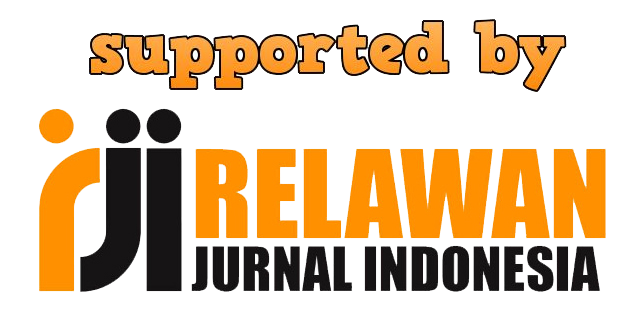Income Determinants of Women in East Java's Informal Labor Market: Microdata Approach
DOI:
https://doi.org/10.23887/jish.v12i3.68965Kata Kunci:
Sektor informal, Pekerja wanita, Determinan upahAbstrak
Perempuan seringkali terlibat di sektor informal karena berbagai alasan, seperti terbatasnya akses terhadap pendidikan dan pelatihan, terbatasnya kesempatan kerja formal, dan tingginya tanggung jawab rumah tangga dalam keluarga. Perempuan juga sering terlibat dalam usaha kecil yang terkait dengan sektor informal dan memberikan kontribusi yang signifikan terhadap perekonomian. Sayangnya, pekerja perempuan di sektor informal juga sering menghadapi diskriminasi gender dan kondisi kerja yang buruk, seperti upah rendah, jam kerja panjang, dan tidak adanya akses terhadap asuransi atau tunjangan sosial. Oleh karena itu, penelitian ini bertujuan untuk menganalisis faktor-faktor penentu pendapatan pekerja perempuan di sektor informal menggunakan mikrodata dari SAKERNAS 2020. Penelitian ini menemukan beberapa kesimpulan penting yang muncul. Pertama, peningkatan lama sekolah berpengaruh positif terhadap kemungkinan memperoleh pendapatan yang layak. Kedua, usia pada awalnya berpengaruh positif terhadap pendapatan yang layak, namun mulai menurun setelah mencapai usia tertentu yang mengindikasikan hasil yang semakin berkurang. Status perkawinan mempunyai peranan yang penting, karena perempuan yang menikah dan bekerja di sektor informal mempunyai peluang lebih kecil untuk memperoleh pendapatan yang layak. Selain itu, tempat tinggal di pedesaan mengurangi kemungkinan memperoleh pendapatan yang layak dibandingkan dengan tinggal di perkotaan. Terakhir, kemahiran dalam penggunaan internet secara signifikan meningkatkan kemungkinan memperoleh pendapatan yang layak.
Referensi
Becker, G. S. (2009). Human capital revisited. In Human capital: A theoretical and empirical analysis with special reference to education, third edition (pp. 15–28). The University of Chicago Press.
Bolli, T., Parajuli, M. N., & Renold, U. (2019). Changes in the Relationship Between Formal Education and Formal Employment Sector in Nepal Between 1995 and 2014. Journal of Education and Research, 9(2), 49–73. https://doi.org/10.3126/jer.v9i2.30462
Breman, J. (1976). A dualistic labour system? A critique of the’informal sector’concept: I: The informal sector. Economic and Political Weekly, 1870–1876.
Cattaneo, A., Adukia, A., Brown, D. L., Christiaensen, L., Evans, D. K., Haakenstad, A., McMenomy, T., Partridge, M., Vaz, S., & Weiss, D. J. (2022). Economic and social development along the urban–rural continuum: New opportunities to inform policy. World Development, 157, 105941. https://doi.org/10.1016/j.worlddev.2022.105941
Fadlli, M. D. (2022). The Role of East Java as A Trade Hub for Eastern Indonesia. East Java Economic Journal, 6(1), 95–110. https://doi.org/10.53572/ejavec.v6i1.80
Fields, G. S. (2004). Dualism in the labor market: A perspective on the Lewis model after half A century. Manchester School, 72(6), 724–735. https://doi.org/10.1111/j.1467-9957.2004.00432.x
Freeman, J., Park, S., Middleton, C., & Allen, M. (2016). The Importance of Broadband for Socio-Economic Development: A Perspective from Rural Australia. Australasian Journal of Information Systems, 20, 1–18. https://doi.org/10.3127/AJIS.V20I0.1192
Gang, I. N., & Gangopadhyay, S. (1990). A Model of the Informal Sector in Development. Journal of Economic Studies, 17(5). https://doi.org/10.1108/01443589010138364
Ghozali, I. (2016). Aplikasi Analisis multivariete dengan program IBM SPSS 23 (Edisi 8). Badan Penerbit Universitas Diponegoro.
Hohberg, M., & Lay, J. (2015). The impact of minimum wages on informal and formal labor market outcomes: evidence from Indonesia. IZA Journal of Labor and Development, 4(1). https://doi.org/10.1186/s40175-015-0036-4
Huu Thu, N., Bao Duong, P., & Huu Tho, N. (2021). Filling the voids left by the formal sector: informal borrowings by poor households in northern mountainous Vietnam. Agricultural Finance Review, 81(1), 94–113. https://doi.org/10.1108/AFR-12-2019-0134
Kesar, S., & Bhattacharya, S. (2020). Dualism and Structural Transformation: The Informal Manufacturing Sector in India. European Journal of Development Research, 32(3), 560–586. https://doi.org/10.1057/s41287-019-00228-0
Moussié, R., & Alfers, L. (2018). Women informal workers demand child care: Shifting narratives on women’s economic empowerment in Africa. Agenda, 32(1), 119–131. https://doi.org/10.1080/10130950.2018.1427690
Nackerdien, F., & Yu, D. (2019). A panel data analysis of the formal-informal sector labour market linkages in South Africa. Development Southern Africa, 36(3), 329–350. https://doi.org/10.1080/0376835X.2018.1487830
Olu-Owolabi, F. E., Amoo, E., Oni, S., Oyeyemi, A., & Adejumo, G. (2020). Female-dominated informal labour sector and family (in) stability: The interface between reproduction and production. Cogent Arts and Humanities, 7(1). https://doi.org/10.1080/23311983.2020.1788878
Psacharopoulos, G., & Patrinos, H. A. (2004). Returns to investment in education: A further update. Education Economics, 12(2), 111–134. https://doi.org/10.1080/0964529042000239140
Rothenberg, A. D., Gaduh, A., Burger, N. E., Chazali, C., Tjandraningsih, I., Radikun, R., Sutera, C., & Weilant, S. (2016). Rethinking Indonesia’s Informal Sector. World Development, 80, 96–113. https://doi.org/10.1016/j.worlddev.2015.11.005
Shahid, M. S., Williams, C. C., & Martinez, A. (2020). Beyond the formal/informal enterprise dualism: Explaining the level of (in)formality of entrepreneurs. International Journal of Entrepreneurship and Innovation, 21(3), 191–205. https://doi.org/10.1177/1465750319896928
Si, X., & Li, M. (2023). Impact of the internet use on informal workers’ wages: Evidence from China. PLoS ONE, 18(5 May), 1–19. https://doi.org/10.1371/journal.pone.0285973
Tjiptono, F., Santoso, S. (2001). Riset Pemasaran: Konsep Dalam Aplikasi SPSS. PT Elex Media Computindo.
Williams, C. C., Horodnic, I. A., & Windebank, J. (2017). Evaluating the internal dualism of the informal sector: evidence from the European Union. Journal of Economic Studies, 44(4), 605–616. https://doi.org/10.1108/JES-07-2016-0144
Unduhan
Diterbitkan
Terbitan
Bagian
Lisensi
Hak Cipta (c) 2023 Wildan Syafitri, Bahtiar Fitanto, Axellina Muara Setyanti, Nurul Izza

Artikel ini berlisensiCreative Commons Attribution-ShareAlike 4.0 International License.
Authors who publish with the Jurnal Ilmu Sosial dan Humaniora agree to the following terms:
- Authors retain copyright and grant the journal the right of first publication with the work simultaneously licensed under a Creative Commons Attribution License (CC BY-SA 4.0) that allows others to share the work with an acknowledgment of the work's authorship and initial publication in this journal.
- Authors are able to enter into separate, additional contractual arrangements for the non-exclusive distribution of the journal's published version of the work (e.g., post it to an institutional repository or publish it in a book), with an acknowledgment of its initial publication in this journal.
- Authors are permitted and encouraged to post their work online (e.g., in institutional repositories or on their website) prior to and during the submission process, as it can lead to productive exchanges, as well as earlier and greater citation of published work. (See The Effect of Open Access)


.png)
.png)





